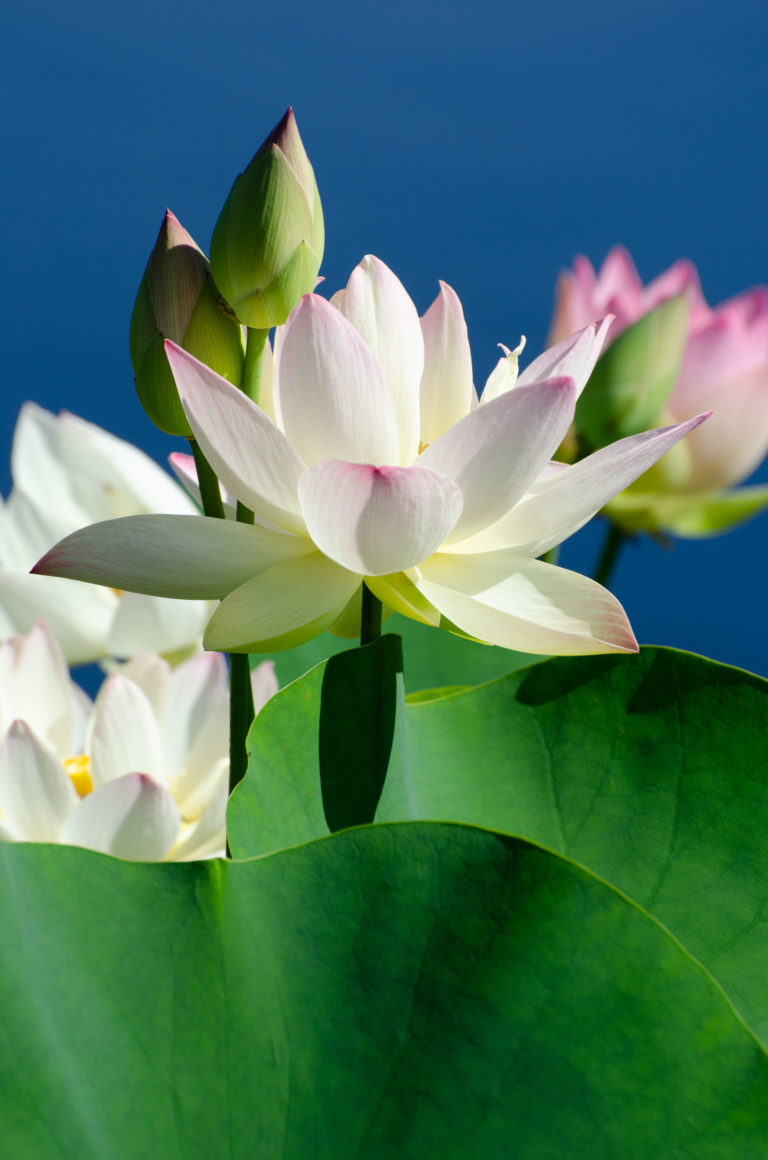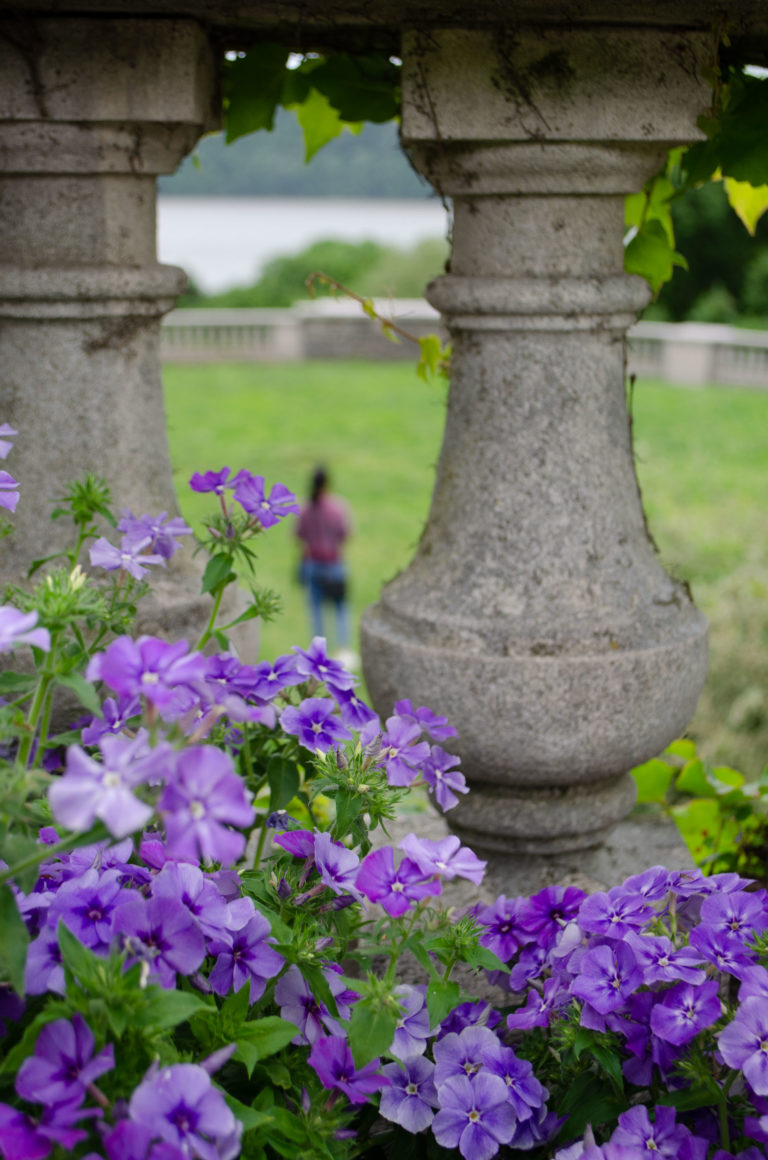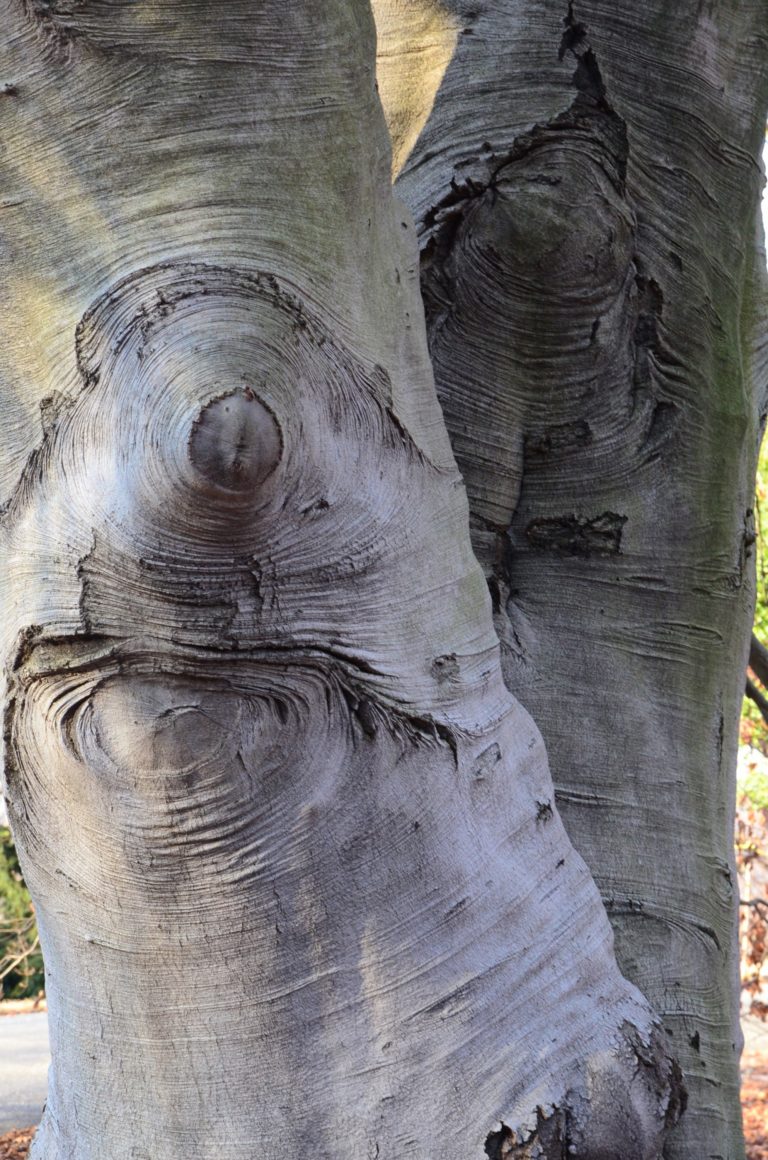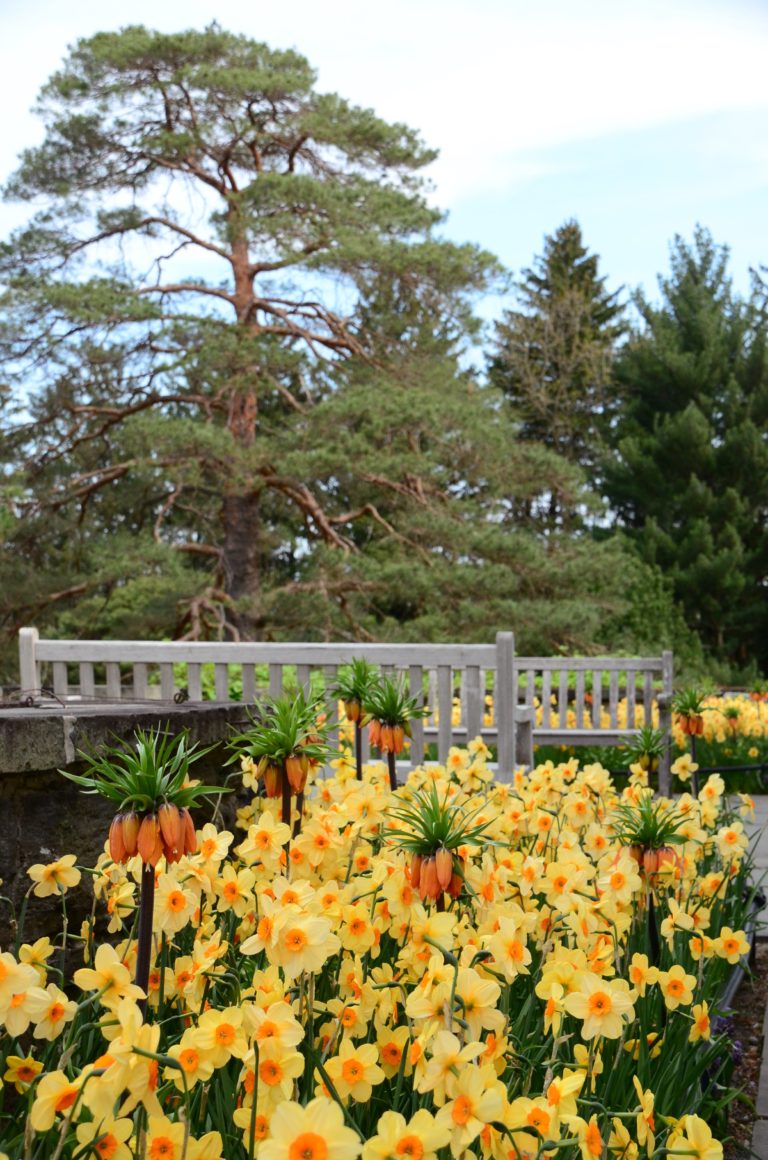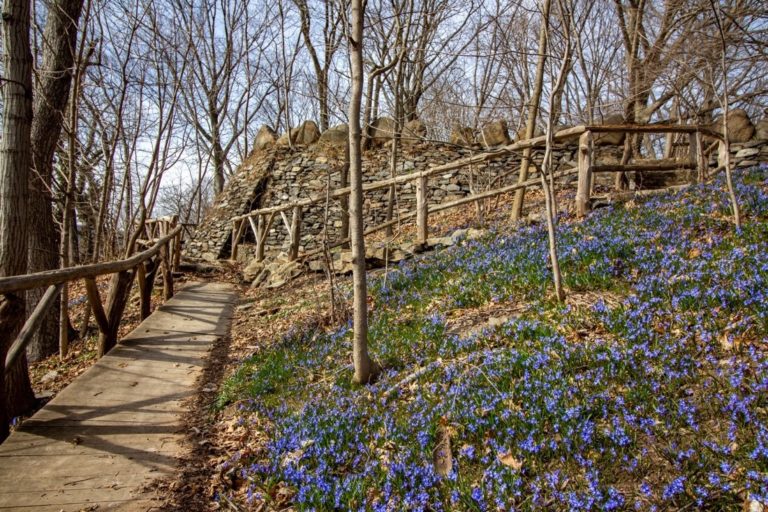
Overlooking The Woodland
March 14, 2024The Overlook in Wave Hill’s Herbert & Hyonja Abrons Woodland juts out of the hillside into the half-mile ambling trail. It makes a statement and provides an elevated perspective to onlookers high above the lower trails. This is the perfect location for viewing the early spring super bloom of Scilla sardensis (glory-of-the-snow).
To find the Overlook head west across the lawn south of Glyndor Gallery. At the lawn edge is an opening between an oak and Katsura tree, through there lies the Overlook. While there are no stairs on this route, the lawn is sloped and uneven. A more gradual and scenic route to the Overlook exists by taking the woodland path adjacent to the front entrance.
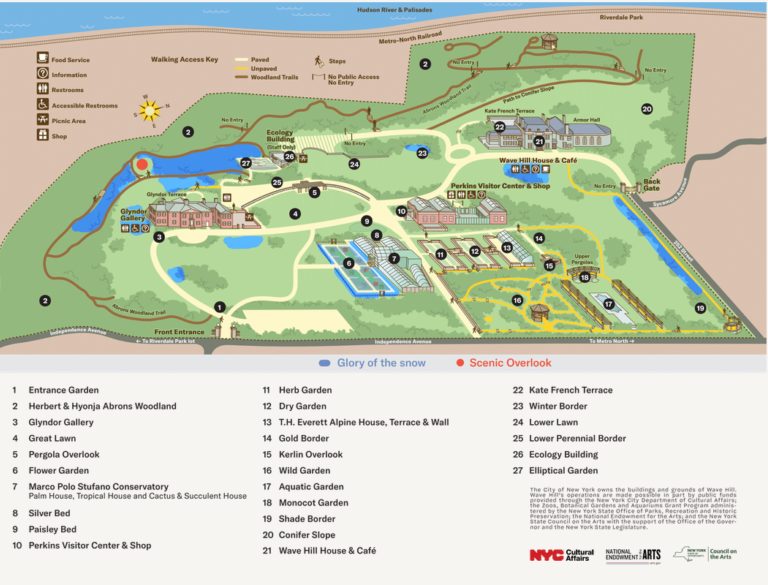
The Overlook’s design remains a mystery, but it reminds me of a cairn. Cairns are stone structures used for thousands of years by cultures around the world to mark important things. Associate Director of Horticulture, Steven Conaway describes the Overlook as “topped with a crown of boulders smoothed by glacial action”. The base is cone-shaped and contains an amalgam of rough-hewn granite blocks of all different sizes. In the spring sun, these blocks glitter with mica deposits.
Today, it marks the highest concentration of glory-of-the-snow.
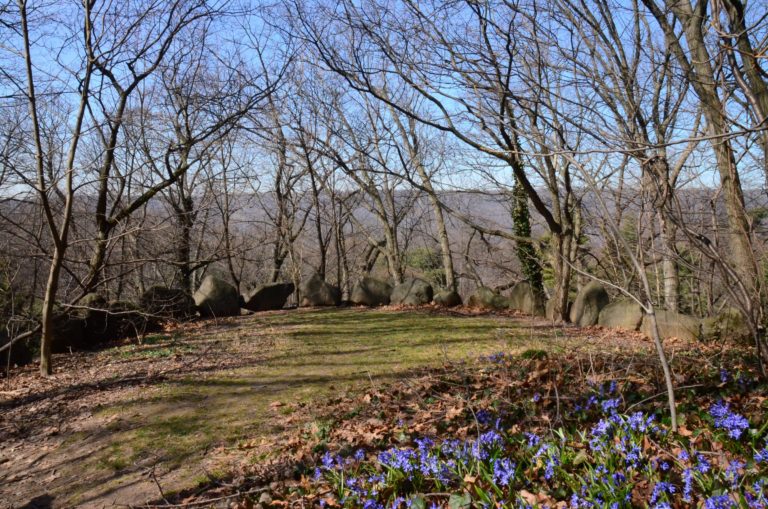
Today’s view drastically differs from the view of the early 1900s, when the Overlook was erected. At the turn of the century, Wave Hill was part of the Perkins Family estate and was the subject of major landscape changes across several decades. Aerial imagery from 1924 shows a woodland behind current-day Glyndor Gallery, but beyond this section were fields, pastures, orchards and vegetable gardens. From atop the Overlook in 1924, the Perkins Family would have seen the Hudson River and across to the Palisades Cliffs of New Jersey. In 1965, when Wave Hill became a public garden this view was still visible over the trees. Today, the woods have grown up, trees in this and neighboring woods obscure this view.
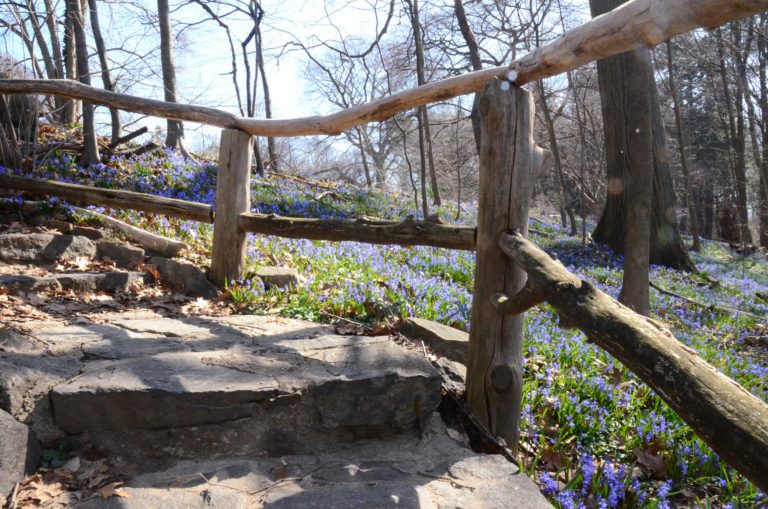
The Herbert & Hyonja Abrons Woodland consists of eight-acres of hillside woods along the western border of Wave Hill. Its tree canopy touches neighboring Riverdale Park connecting Wave Hill with a larger urban ecosystem beyond our borders. This type of contiguous habitat is important as a wildlife corridor for local coyotes, hawks, raccoons, native pollinators and birds to move through. Wildlife may need to travel across manmade borders for food, water, breeding, hibernation or migration.
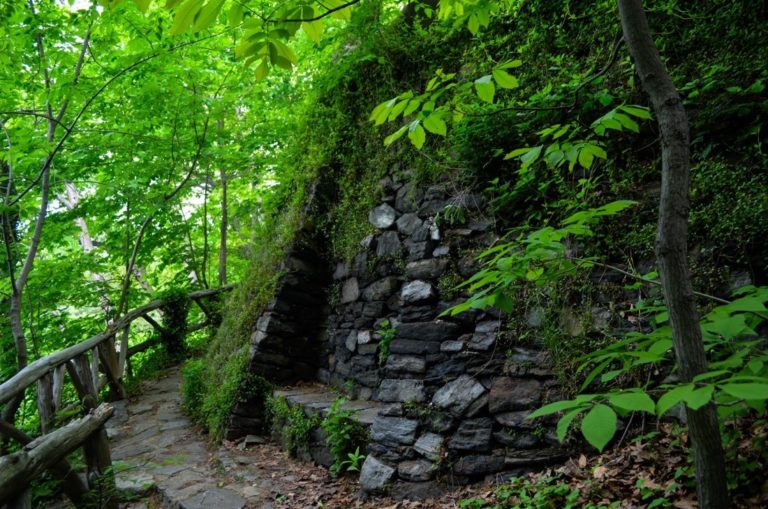
The plant composition here is both a product of natural succession and human intervention. A mixture of naturally occurring hardwoods: oak, cherry and hickory dominate the canopy throughout the woodland. Interns in Wave Hill’s summer Forest Project have spent decades introducing additional native plants such as American holly, red cedar and many of the herbaceous ferns and wildflowers. There have also been some pointed efforts by Horticulture staff, “an early gardening effort led to the creation of a coniferous section in the south” Conaway mentions.
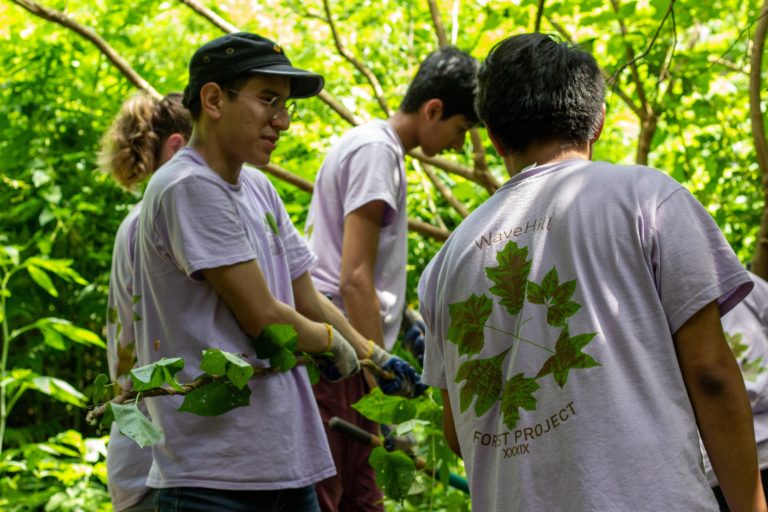
This woodland is considered an oak-hickory forest, the dominant forest profile of the northeast. The composition of this forest-type has provided food to people and fauna for thousands of years. However, with today’s urban pressures, a woodland like this doesn’t just exist on its own. Human management keeps the plants in balance. During summertime, Forest Project interns provide maintenance with guidance from a plan, simply put by Conaway as “our forest management plan calls for the removal of invasive shrubs and prolific seedlings to provide space for high diversity in the forest.”
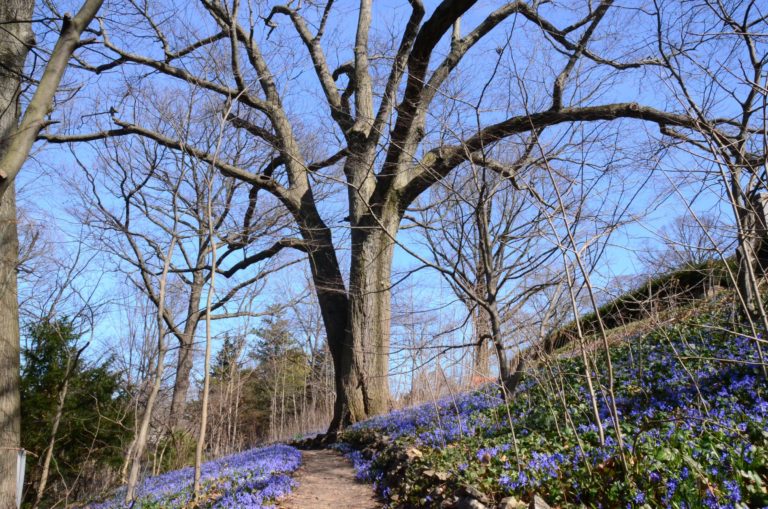
Where does the glory-of-the-snow, a plant native to Türkiye, fit into this forest management plan? As a historic estate, Wave Hill’s land contains the impacts of all its previous stewards. The glory-of-the-snow was well established before Wave Hill was formed as a public garden and this little blue plant isn’t going anywhere. Along with many of our great trees, like the giant red oak behind Glyndor Gallery, glory-of-the-snow is loved by all. While this land will continue to transfer from one guiding hand to the next, many of the plants will remain.
Continue to check Wave Hill’s website and social media for updates on glory-of-the-snow bloom. Click here for more information on this “super-bloom” experience.
